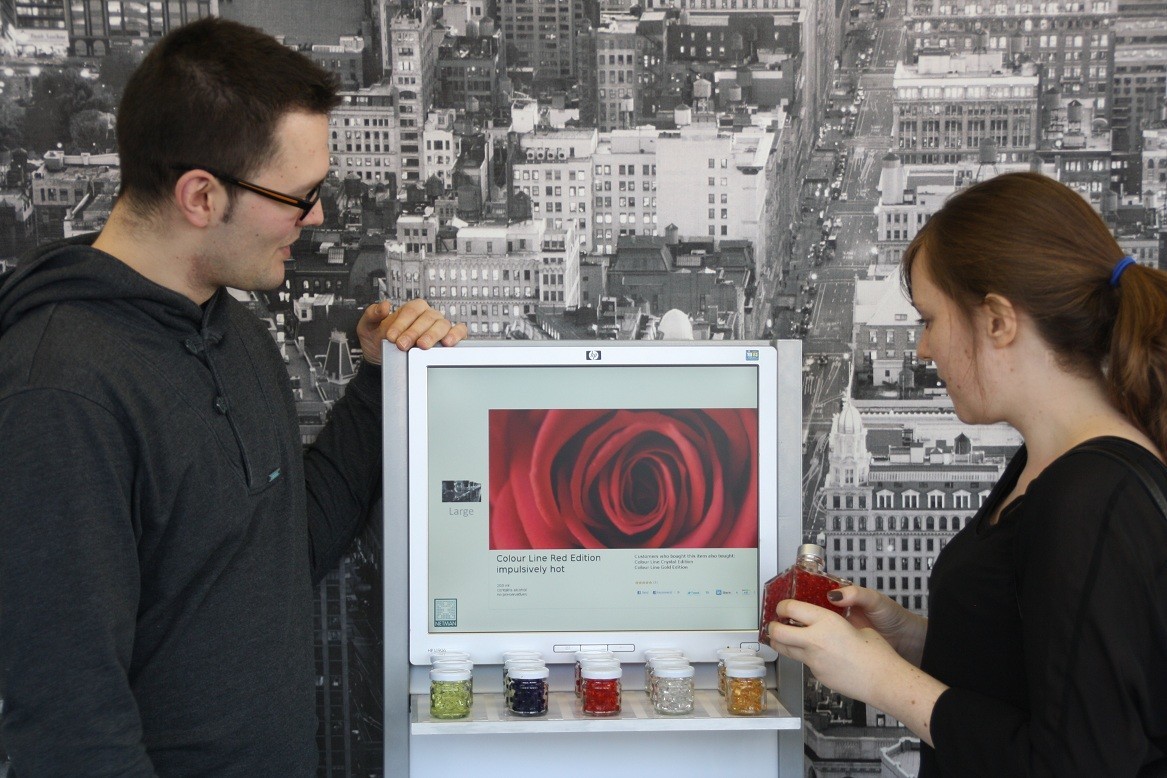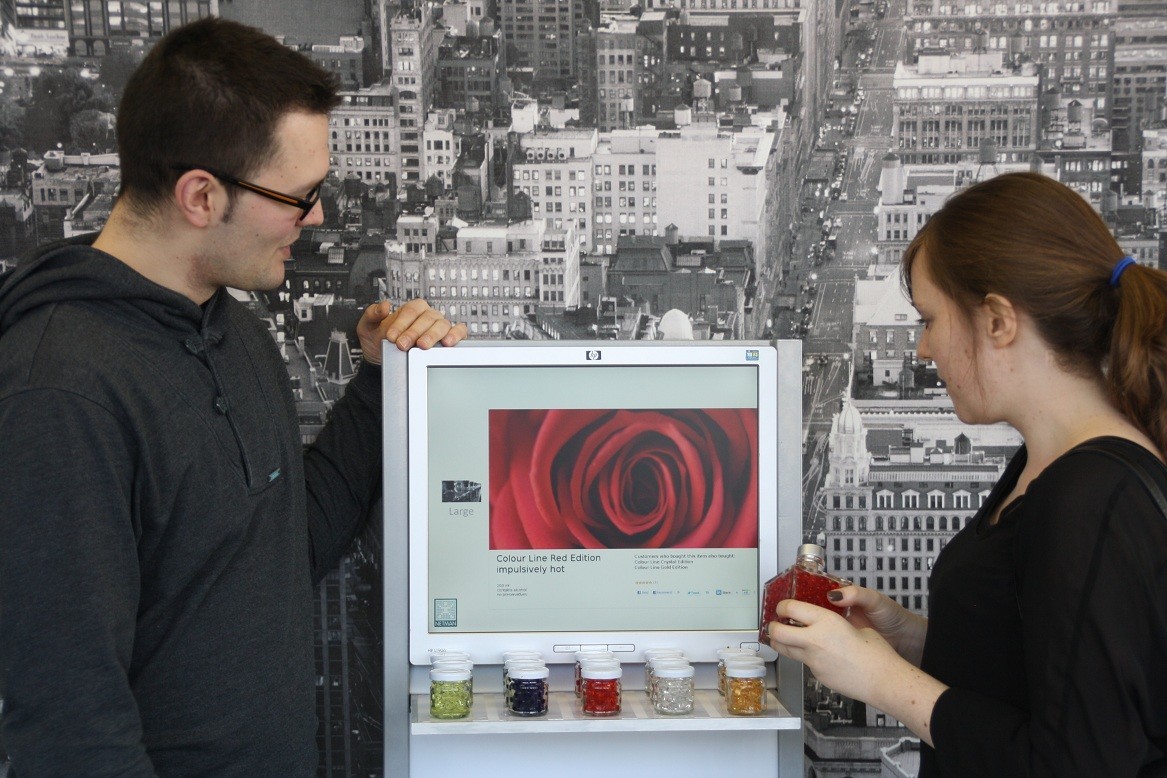
Triggered Content: What’s Old Is Somehow New Again
April 2, 2015 by Dave Haynes

Photo: StoreSkin (Austria)
More than 15 years in digital signage has, admittedly, left me a little jaded.
What can excite a bunch of people barely gets a shrug out of me when I see it or read about it.
Sometimes common sense tells you something won’t every really fly – like glasses-free 3D or most of the Stupid People Trick interactive Kinect installs out there.
But sometimes I shrug because it’s been done. Long ago. Sometimes waaaaay long ago.
For whatever reason, there seems to be some strange rise in demos, trade show buzz and PR about triggered content – as in, I pushed a button and OH MY GOD the content changed on the screen by said button! Right before my very eyes!!!
Or I lifted a shoe off a fixture. Or I walked by something and a sensor — sorry, an Internet of Things device — made something different happen on a screen.
In the right circumstance, triggered content can indeed be very effective. No argument there. But it has been done.
Done. Done. Done. For more than a decade.
I can point you at awards for RFID-triggered digital signage in retail from 2006.
I was screwing around, via Digital View, with motion-sensor triggered content in 2005.
And it goes back further than that.
That history and context matters for a few reasons:
– lessons got learned, so learn from them, too;
– some things stuck, and others did not;
– some stuff just didn’t work (so don’t bring it back from the dead).
One example: content pushed to screens from small consumer electronic merchandising cradles – like the ones for smartphones – seems a great idea until you learn some tethers can bind up, jam and cause headaches, and the alarmed ones can go off if you look at them the wrong way.
My advice if you are retailer marketer looking at this stuff: figure out the right keywords – like triggered content digital signage – and start poking around and reading. You’ll learn there’s a history, and that making this happen is about as technically magical as flicking a light switch.
When this stuff works, the utility of it just works, and there’s an experience that people like and want to come back to.



I remember doing a demo in 1998 to show how an integration would allow exceptions to trigger an email message to an IT staff member’s phone. People thought is was very impressive.
What’s an exception?
Pushing buttons is fun! Get with it. http://littlebits.cc/
This post dropped with great timing for me as I had just learned about Cenique and their Intellisense product.
So many omni-channel marketing folks talk about “responsive” but are often referring to the idea that a piece of content needs to work on various device sizes or operating systems.
IMHO, companies like Cenique are beginning to fulfill the true promise of what “responsive” means which is that we match content/experience to the person by adapting the content based on various triggers.
In the public context of small screen digital signage or kiosks, content will be less personalized compared to that which would appear on a personal device – smartphone or tablet. That said – signals like gender, age, dwell time, repeat visit, and facial expression could be used to tune content on a ‘public’ device for the anonymous user.